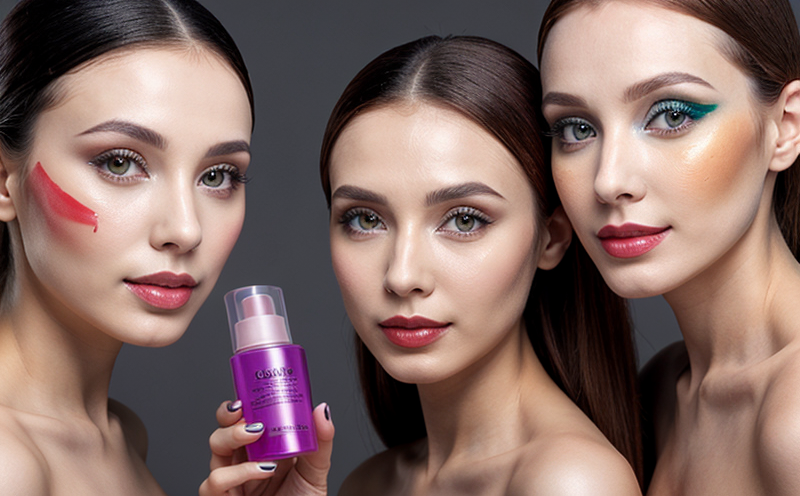In Vitro Reconstructed Cornea Testing for Eye Safety
In vitro reconstructed cornea testing represents a significant advancement in the field of toxicology and safety assessment within cosmetics. This method provides an alternative to traditional animal-based tests by offering a more humane, efficient, and accurate means of evaluating eye irritation potential and corrosivity of cosmetic formulations. The reconstructed corneas are cultured from human cells, mimicking the native corneal tissue structure, thus enabling precise and reliable assessments.
The process begins with the isolation and cultivation of corneal epithelial cells. These cells form a three-dimensional matrix that closely resembles the natural cornea's architecture. Once established, this in vitro model is exposed to cosmetic samples under controlled conditions for a specified duration. The integrity and function of the reconstructed cornea are monitored using various analytical techniques such as microscopy, biochemical assays, and viability tests.
The reconstructed cornea test offers several advantages over traditional animal models. Firstly, it eliminates the ethical concerns associated with vivisection. Secondly, it reduces costs significantly by minimizing resource consumption, including laboratory space and personnel time. Thirdly, this method allows for higher throughput, enabling more samples to be tested in a shorter period.
Another key benefit is improved accuracy. The reconstructed corneas closely mimic the human ocular surface, making the results more predictive of real-world outcomes. This increased reliability enhances decision-making processes during product development and regulatory submissions. Moreover, it supports the transition towards more sustainable practices by minimizing waste generation and reducing environmental impact.
The reconstructed cornea test is compliant with several international standards, including ISO 10993-10:2018. This standard specifies requirements for biological evaluation of medical devices, which includes ocular products like cosmetic formulations. By adhering to these guidelines, laboratories adopting this technology ensure that their testing methodologies are validated and recognized globally.
For quality managers and compliance officers, the reconstructed cornea test provides a robust framework for ensuring product safety while meeting regulatory requirements. R&D engineers can leverage this tool to optimize formulation designs by identifying potential issues early in the development cycle. Procurement teams benefit from having access to reliable data that supports informed purchasing decisions.
The reconstructed cornea model is particularly useful when assessing specific compounds or ingredients known to pose risks of irritation or corrosion. It allows for targeted evaluations, reducing unnecessary tests on additional products while focusing on those most likely to present hazards. Additionally, this method facilitates the development of safer cosmetic formulations by providing insights into ingredient interactions and potential adverse effects.
In conclusion, in vitro reconstructed cornea testing offers a transformative approach to eye safety assessment within cosmetics. By combining ethical considerations with scientific rigor, it paves the way for more responsible and effective product development practices.
Applied Standards
The reconstructed cornea test adheres to several international standards that ensure its reliability and validity. These include:
- ISO 10993-10:2018 - Biological evaluation of medical devices, including ocular products.
- ASTM F2794-16 - Standard practice for the preparation and in vitro testing of human corneal epithelial cells from excised tissue.
- EN 1483:2015 - Cosmetics - Determination of acute eye irritation potential by means of an in vitro reconstructed human cornea model (ETHM).
These standards provide clear guidelines on the preparation, maintenance, and testing of reconstructed corneas. Compliance with these specifications guarantees consistent results across different laboratories and enhances confidence in the test outcomes.
Environmental and Sustainability Contributions
The reconstructed cornea test contributes positively to environmental sustainability by reducing reliance on animal testing. Traditional methods involve the use of live animals, which can lead to significant environmental impacts through resource consumption and waste generation. By adopting this in vitro approach, laboratories significantly decrease their carbon footprint and operational expenses.
- Reduction in Animal Use: Elimination of animal-based tests aligns with global efforts towards reducing the number of animals used for scientific research.
- Resource Efficiency: Lower water usage and reduced energy consumption are achieved by optimizing laboratory processes.
- Waste Minimization: Decreased waste production results in less landfill use, promoting a cleaner environment.
The reconstructed cornea test also supports sustainable business practices by fostering innovation and efficiency. This approach encourages the development of more eco-friendly products while maintaining high standards of safety and quality.
Competitive Advantage and Market Impact
Adopting in vitro reconstructed cornea testing can provide significant competitive advantages for companies operating in the cosmetics industry. Here are some key impacts:
- Innovation Leadership: Companies that invest in this technology position themselves as leaders in ethical research practices, appealing to consumers who prioritize sustainability and animal welfare.
- Enhanced Product Safety: Accurate and reliable testing ensures that products meet rigorous safety standards, enhancing brand reputation and consumer trust.
- Compliance with Regulations: By following international standards like ISO 10993-10:2018, companies demonstrate their commitment to regulatory compliance, streamlining the approval process for new products.
The reconstructed cornea test also facilitates faster market entry by enabling quicker product validation. This agility allows companies to stay ahead of competitors and capture emerging market opportunities more effectively.
Moreover, this technology supports long-term sustainability goals by reducing operational costs associated with animal testing while maintaining high-quality standards. As consumer demand for cruelty-free products continues to grow, having a robust in vitro testing capability becomes increasingly important for market success.





